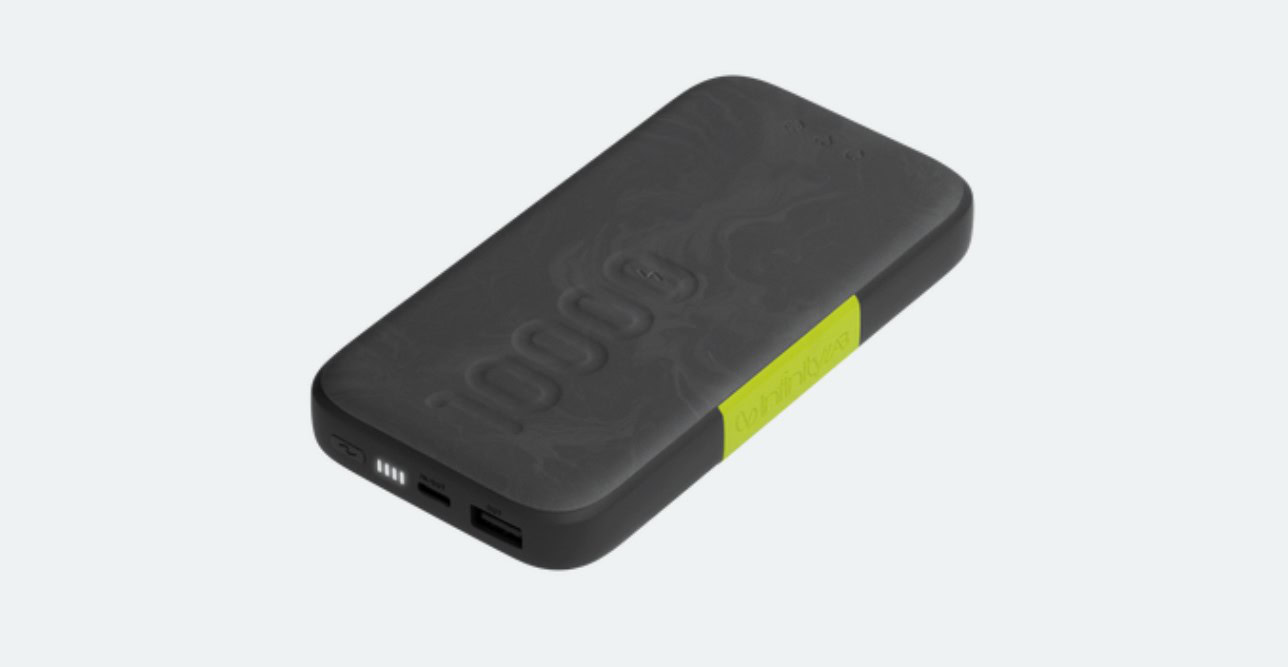Affiliate links on Android Authority may earn us a commission. Learn more.
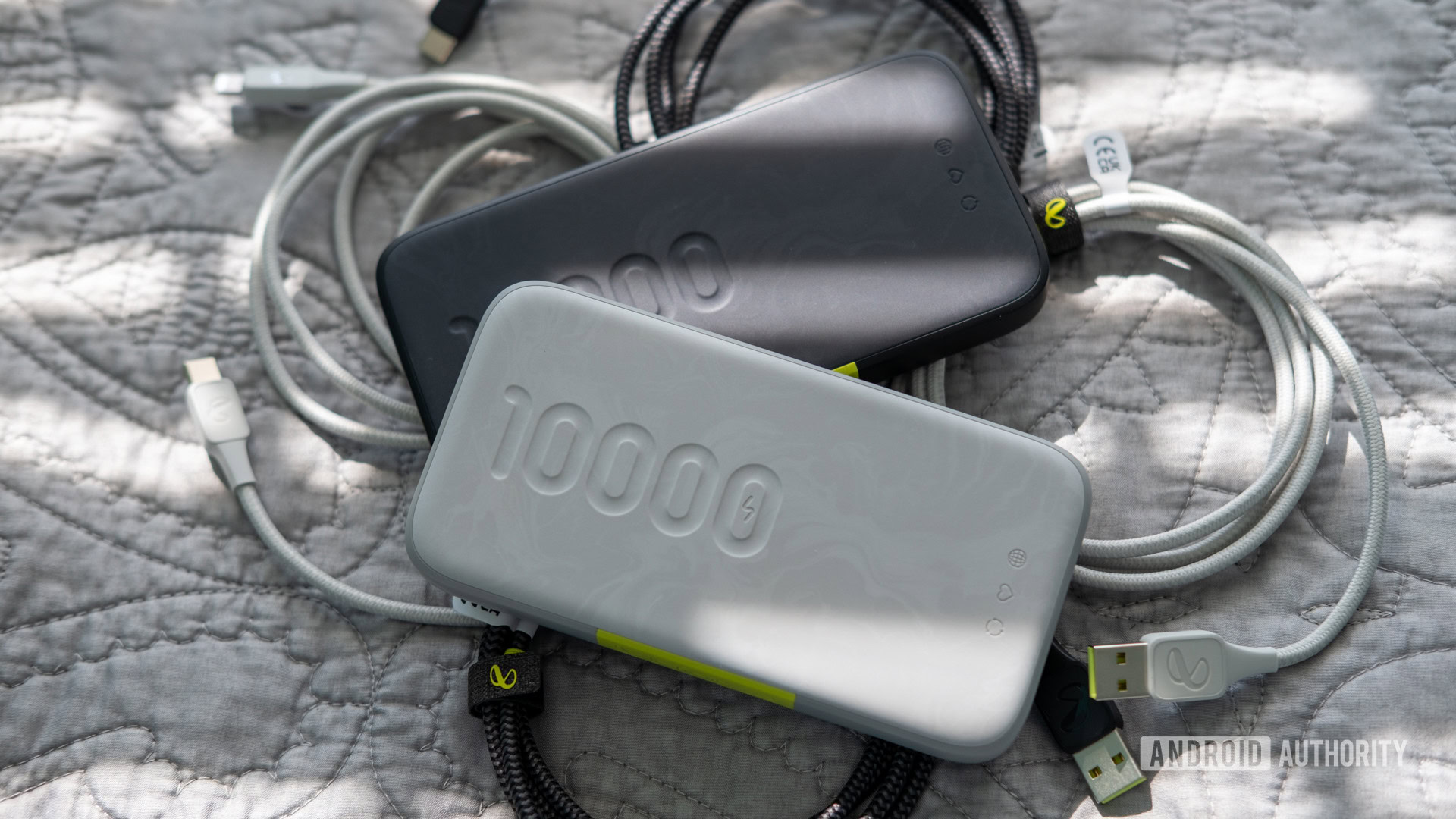
InfinityLab InstantGo 10,000mAh Power Bank
MSRP:
What we like
What we don't like
InfinityLab InstantGo 10,000mAh Power Bank
There are heaps of 10,000mAh power banks on the market today, which means mountains of plastic that will end up in a landfill one day. Now, Harman is getting into charging accessories with a greener approach. InfinityLab’s InstantGo line of power banks boasts up to 90% recycled plastic, but can it compete against the big names? Find out in our InfinityLab InstantGo power bank review.
What you need to know about the InfinityLab InstantGo power bank
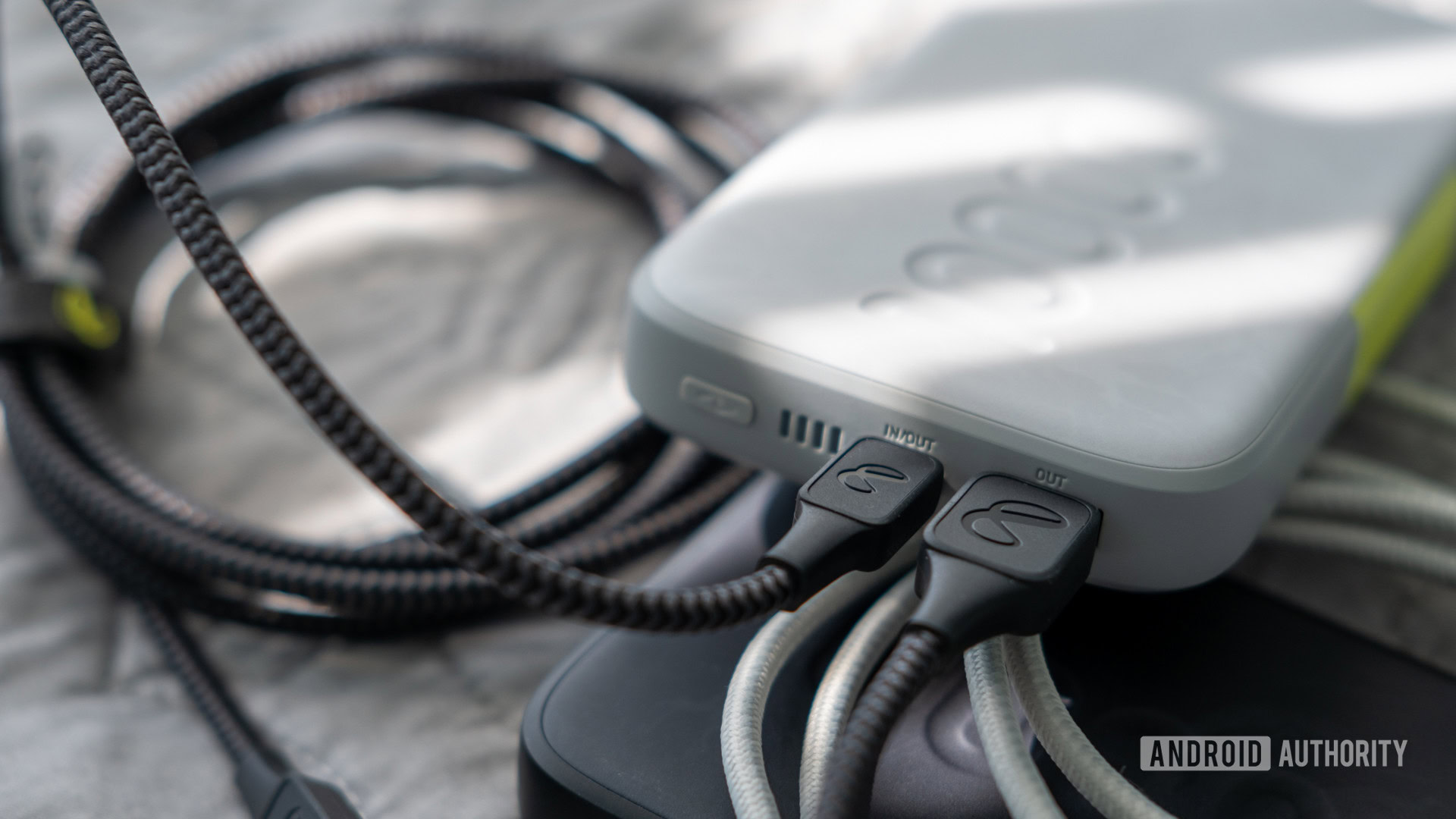
- InfinityLab InstantGo 10,000mAh power bank (Built-in cable): $69.95 / €59.99
- InfinityLab InstantGo 10,000mAh power bank (Wireless): $79.95 / €79.99
InstantGo is InfinityLab’s new line of power banks, and in our case, we’re looking at the larger 10,000mAh versions. Both configurations — the wireless and built-in cable versions — come with a USB-C port for power both in and out, as well as a USB-A out port. The power banks themselves are made of 90% recycled plastics, and you can grab them in either black or white versions.
You can check on the remaining charge at any time with the series of four LEDs located right next to the ports. If you’re not actively charging, you’ll have to press the small button with a lightning bolt to activate the lights. Both power banks share nearly the same footprint, though the built-in cable version is slightly larger. It measures 153mm by 76mm by 15.2mm compared to 145.6mm by 75mm by 19mm for the wireless power bank.
Inside of the sustainable, FSC-certified packaging, you’ll find the power bank itself, a USB-A to USB-C cable, and some basic paperwork to get you off the ground. InfinityLab also printed its packaging with organic soy ink to further minimize the environmental impact.
What’s good?
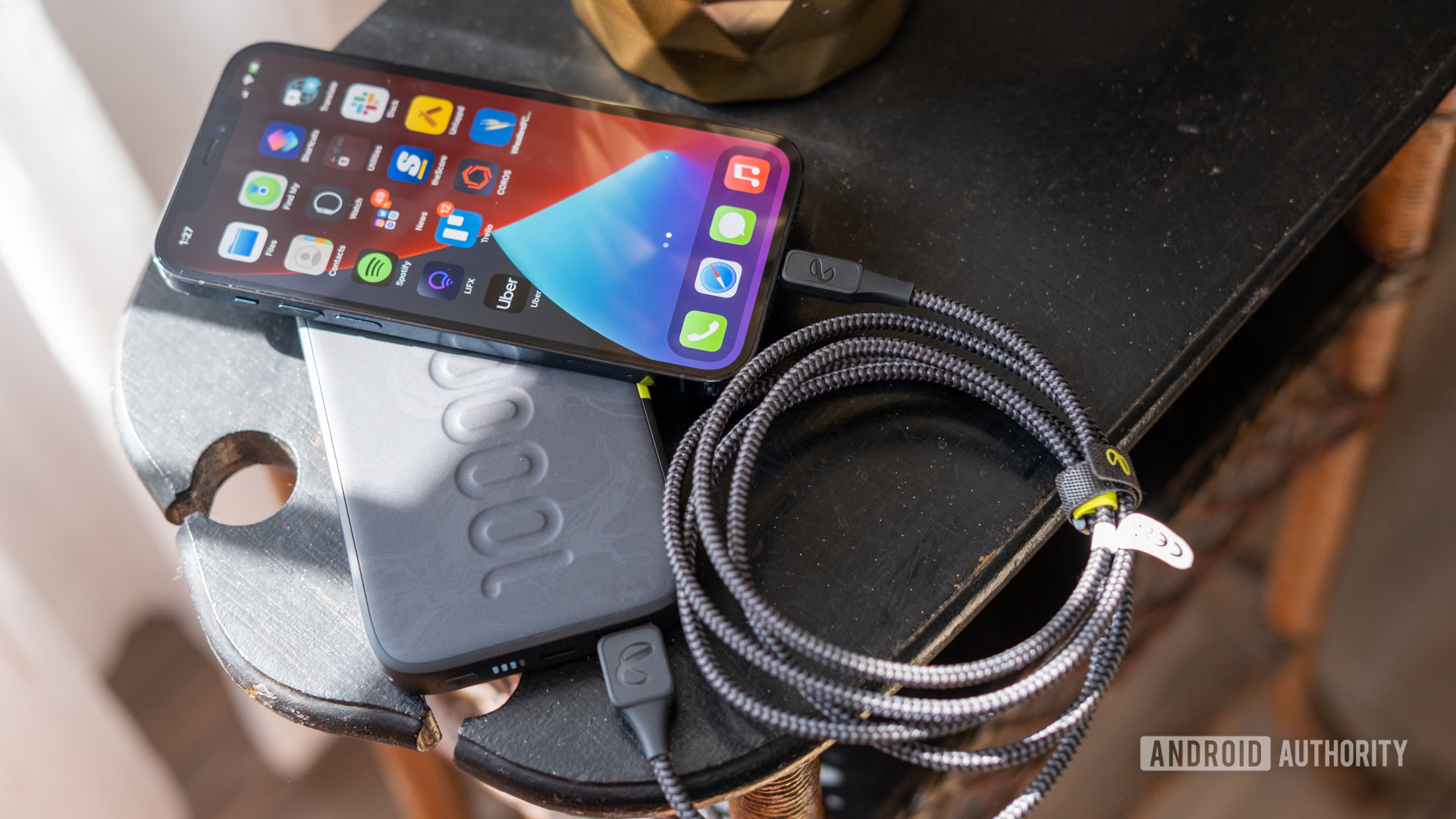
We love to see brands incorporate recycled plastic into their products. InfinityLab didn’t just go for a little bit of recycled material — they went right to 90%. The marbled pattern on each power bank also lends an organic feel, even though the design is identical across the range of products.
Perhaps the best part of InfinityLab’s design is that it’s easy to grab. It has a soft matte finish, and the entire back panel is covered in tiny dimples, so the power banks don’t slide around.
The use of 90% recycled material is just the icing on top of this stylish and easy to hold power bank.
I can also appreciate that InfinityLab opted to release two versions of its 10,000mAh power bank. The black power bank features the built-in USB-C cable in our images, while the white one offers wireless charging. Though I tend to gravitate more towards the built-in USB-C power bank for its higher speeds, they both have their place. If you’re an iPhone user, you can pick up a built-in Lightning cable, too. The wireless InstantGo charger comes Qi-certified and is ready to deliver up to 10W speeds for compatible devices.
No matter which way you go, the InstantGo power banks offer USB Power Delivery 3.0 support and a host of legacy options from the USB-C port. You can tap into Quick Charge 2.0 and 3.0, as well as Apple 2.4A and Samsung’s Adaptive Fast Charge for older devices. InfinityLab added a passthrough charging feature in case you want to charge your phone while you recharge the power bank, though the in/out nature of the USB-C port means you can only charge your phone via USB-A at lower speeds.
See also: The best USB-C cables you can buy
What’s not so good?
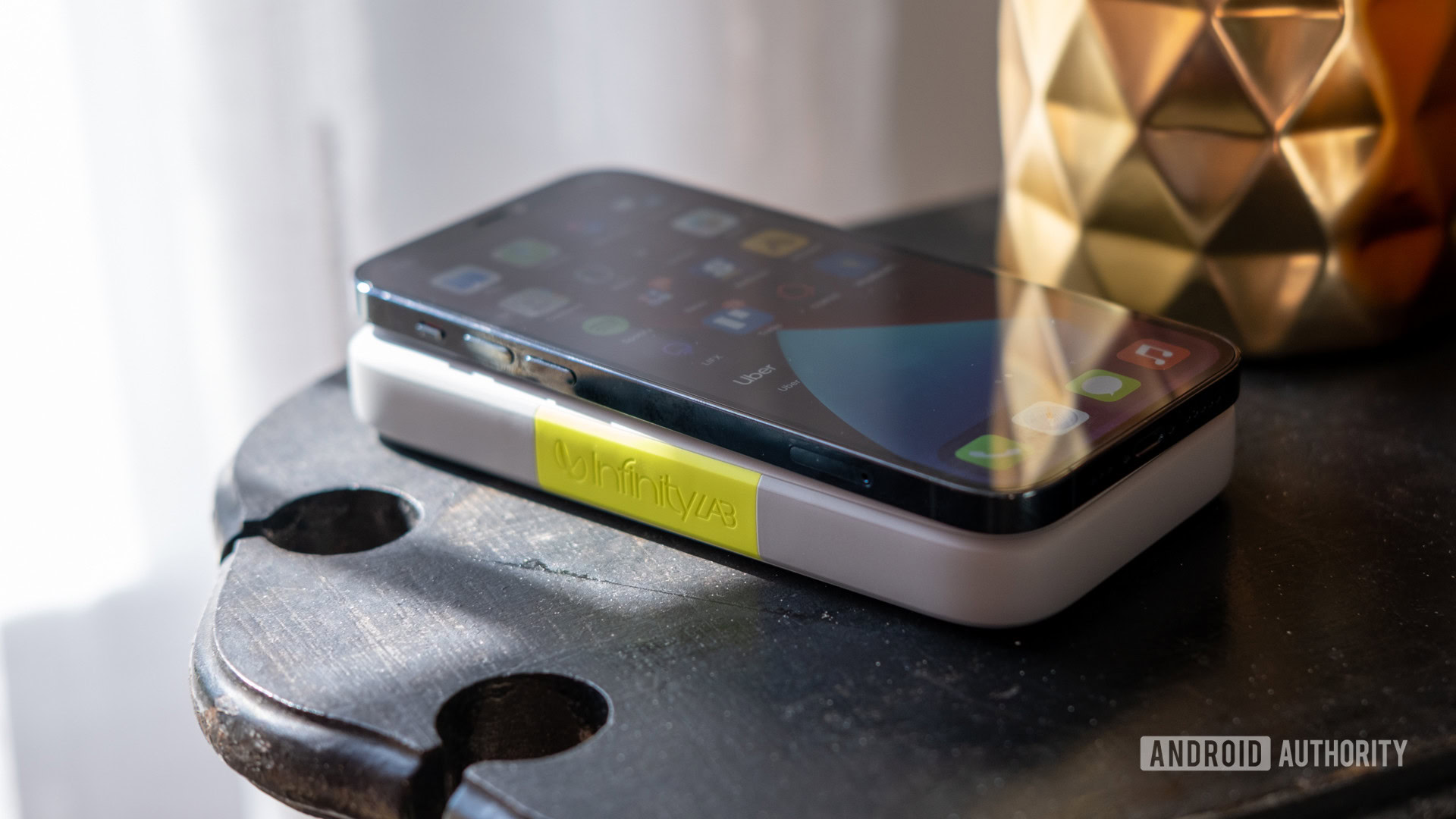
Although it’s good to see USB Power Delivery 3.0 support from InfinityLab, there’s no USB PD PPS support to speak of. Unfortunately, this means that you won’t be able to get modern flagship Samsung Galaxy devices or the Pixel 6 series back to full charge as quickly as possible. A Galaxy S20 Ultra we tested topped out at 14W, far shy of its 45W maximum capabilities. With the iPhone 12 Pro, I managed slightly better speeds with 17W out of a possible 20W. The USB-C port tops out at 30W, so although I could recharge a Microsoft Surface Laptop 3, it was nowhere near the peak 65W speeds.
Charging multiple devices also drops both USB-C ports down to nearly 10W speeds. Even with my Surface Laptop 3 and either of the phones plugged in, I was nowhere near the peak 30W speeds. So multi-port charging is a bit of a weakness.
| InfinityLab InstantGo Power Bank Test | Samsung Galaxy S20 Ultra | Apple iPhone 12 Pro | Microsoft Surface Laptop 3 |
|---|---|---|---|
| InfinityLab InstantGo Power Bank Test Voltage & Current | Samsung Galaxy S20 Ultra USB-C: 9.08V 1.56A USB-A: 5.01V 1.57A | Apple iPhone 12 Pro USB-C: 9.08V 1.87A USB-A: 4.94V 2.20A | Microsoft Surface Laptop 3 USB-C: 19.9V 1.44A USB-A: N/A |
| InfinityLab InstantGo Power Bank Test Charging Standard | Samsung Galaxy S20 Ultra USB-C: USB PD 3.0 USB-A: QC 2.0 | Apple iPhone 12 Pro USB-C: USB PD 3.0 USB-A: APPLE | Microsoft Surface Laptop 3 USB-C: USB PD 3.0 USB-A: N/A |
| InfinityLab InstantGo Power Bank Test Power from Bank | Samsung Galaxy S20 Ultra USB-C: 14.2W USB-A: 7.9W | Apple iPhone 12 Pro USB-C: 17.0W USB-A: 10.9W | Microsoft Surface Laptop 3 USB-C: 28.66W |
You can check out the table above for a full breakdown of the speeds we achieved. I also used InfinityLab’s braided cables for testing, with a Lightning cable rated 20W and a USB-C cable rated 100W.
Unfortunately, recharging either one of the InstantGo power banks takes quite a long time. You can expect to spend around four hours for either the USB-C or wireless models, and the Lightning cable version takes a whopping six hours attached to an outlet.
InfinityLab InstantGo review: Should I buy it?
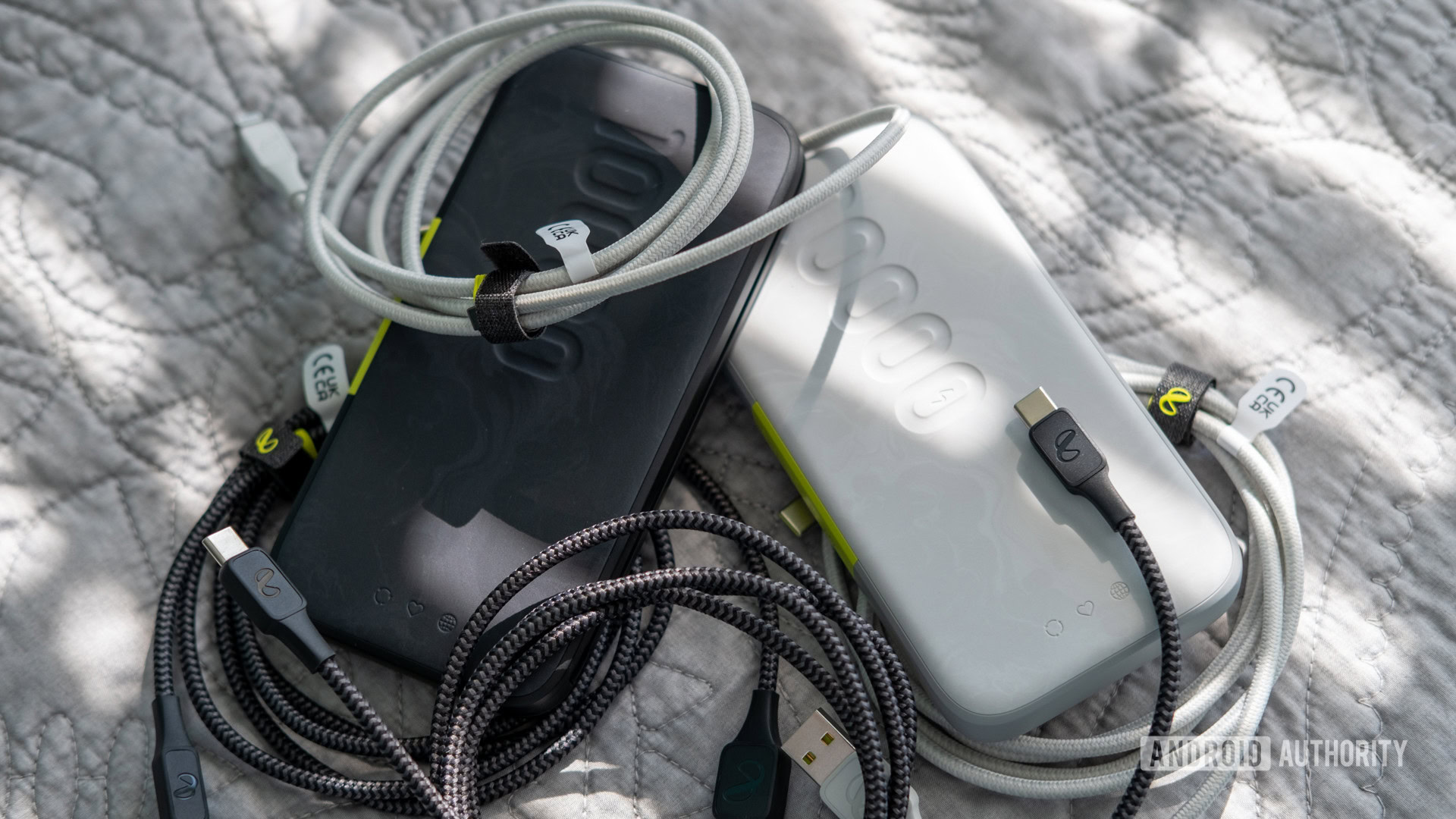
The InfinityLab InstantGo is a solid power bank that’s better for the planet than it is for your wallet. It delivers solid speeds at up to 30W, though there are faster options out there. While it’s more expensive than many other 10,000mAh power banks out there at $69.95 or $79.95, the wireless charging and built-in cable options add some extra flexibility to your setup. Of course, the main selling point is to trim your carbon footprint, so if you want a recycled plastic power bank, it’s tough to beat.
If you want to trim your carbon footprint with a power bank, the InstantGo 10,000mAh is a solid but expensive way to do so.
If you’re not sold on InfnityLab, the best alternative for a recycled plastic power bank has to be Nimble. Nimble’s Champ power bank ($49.95) matches the 10,000mAh capacity and offers an even smaller footprint. It offers Power Delivery 3.0, and it’s housed in 72.5% recycled materials. You can always pick up a more traditional power bank such as the Anker PowerCore III ($49.95) which drops the recycled material but keeps the same 10,000mAh capacity and wireless charging. If you need support for a wider array of charging standards, the USB PD PPS-compatible Samsung 25W Wireless Portable Battery ($79.99) is a pricey but excellent power bank.
